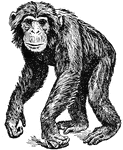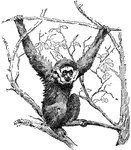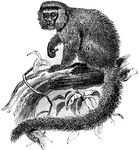Clipart tagged: ‘primate’
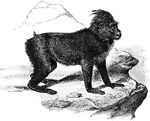
Black Ape
A large black tail&mdashless monkey, commonly called an ape on account of its general aspect.

Red Ape
Monkey, a word loosely applied to apes, baboons, Old and New World monkeys, marmosets and lemurs.
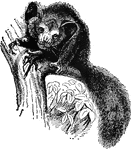
Aye-Aye
"The Aye-aye is an animal of Madagascar, so called from its cry, now referred to the lemur family. It…

Aye-Aye
A lemurine quadruped native to Madagascar. Has an elongated middle finger used to dig grub out of trees.

Baboon
Monkey, a word loosely applied to apes, baboons, Old and New World monkeys, marmosets and lemurs.
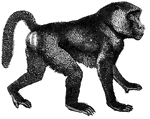
Baboon
Monkey, a word loosely applied to apes, baboons, Old and New World monkeys, marmosets and lemurs.
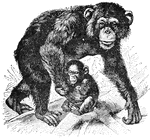
Chimpanzee
Monkey, a word loosely applied to apes, baboons, Old and New World monkeys, marmosets and lemurs.

Chimpanzee
The chimpanzee appears more like humans than any other animal and is found in the west part of Africa.…
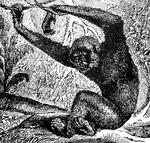
Gibbon
"Gibbon is a genus of tailless anthropoid apes, natives of the East Indies. They are nearly allied to…
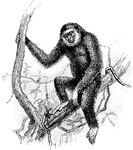
Lar Gibbon
The Lar Gibbon (Hylobates lar) is a primate in the Hylobatidae family of gibbons. It is also known as…
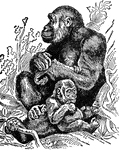
Female Gorilla
"The Gorilla is a celebrated anthropoid ape, generally belived to come nearer than any known one to…

Lemur
The lemur (Latin, lemures, ghosts) get their name from the fact that their movements are noiseless,…
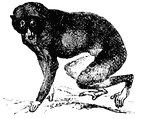
Loris
The loris is found in India. It is skillful in capturing birds, which it does in the night when they…

Mandrill
The mandrill is known for its various and brilliant coloration. Its coat is olive brown and it has a…

Mandrill
"The Mandrill is an African baboon. It was well known to the ancients. A full grown male measures about…
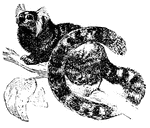
Marmoset
The marmosets are distinguished from other monkeys by their sharp and crooked claws. They are skillful…
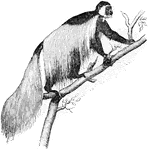
Colobus Monkey
Monkey, a word loosely applied to apes, baboons, Old and New World monkeys, marmosets and lemurs.

Hanaman Monkey
Monkey, a word loosely applied to apes, baboons, Old and New World monkeys, marmosets and lemurs.

Proboscis Monkey
A native of Borneo. The proboscis monkey is so called because of its large nose. Males generally have…
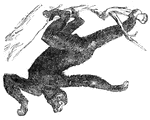
Spider Monkey
The spider monkey uses its tail in climbing. It uses its tail also to feel with, and to seize small…

Spider Monkey
Monkey, a word loosely applied to apes, baboons, Old and New World monkeys, marmosets and lemurs.
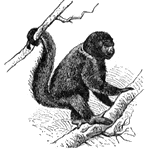
Wooly Monkey
Monkey, a word loosely applied to apes, baboons, Old and New World monkeys, marmosets and lemurs.

Capuchin Monkey
Monkey, a word loosely applied to apes, baboons, Old and New World monkeys, marmosets and lemurs.

Southern Muriqui
The Southern Muriqui (Brachyteles arachnoides) is a wooly spider monkey in the Atelidae family of New…
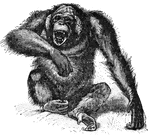
Orangutan
"Monkey, a word loosely applied to apes, baboons, Old and New World monkeys, marmosets and lemurs."—…
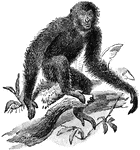
Siamang
The Siamang (Symphalangus syndactylus) is an ape in the Hylobatidae family of gibbons. It is distinguished…
Spermatozoa of an Ape
"One of the numberless microscopic bodies contained in semen, to which the seminal fluid owes its vitality,…
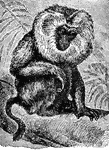
Wanderoo
"The Wanderoo, or Wanderu, is the Macacus silenus, from the S. of Hindustan, especially the country…
